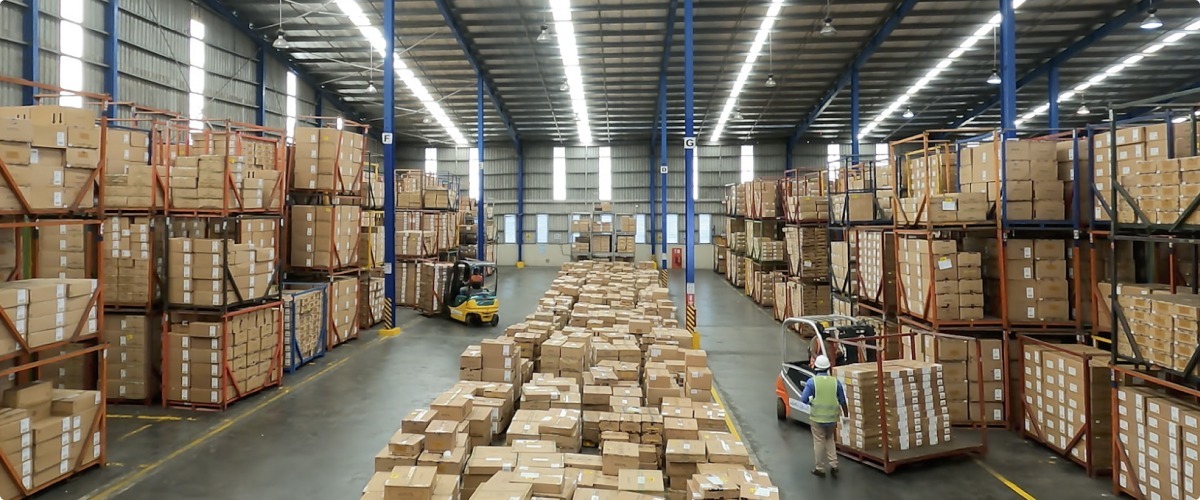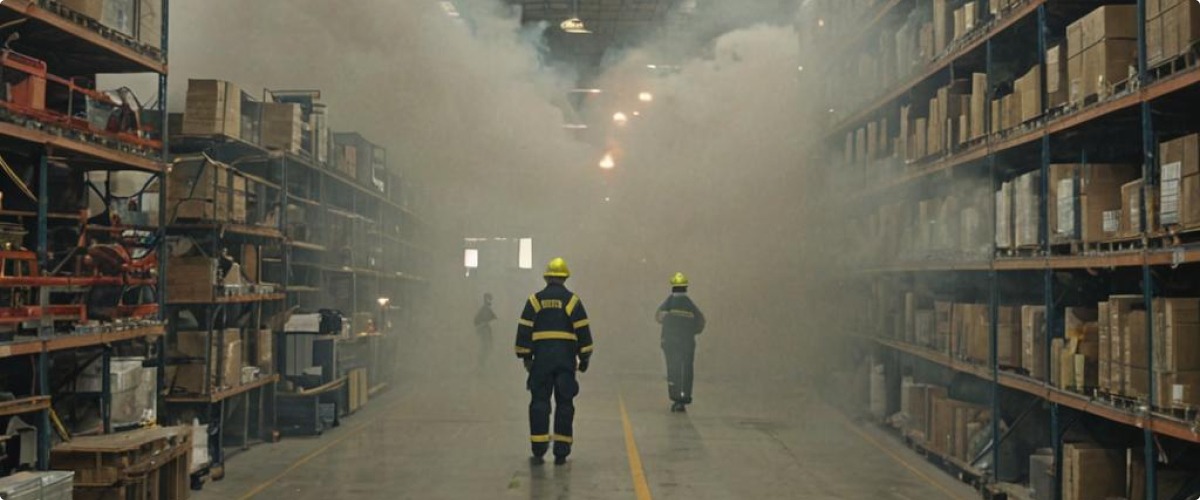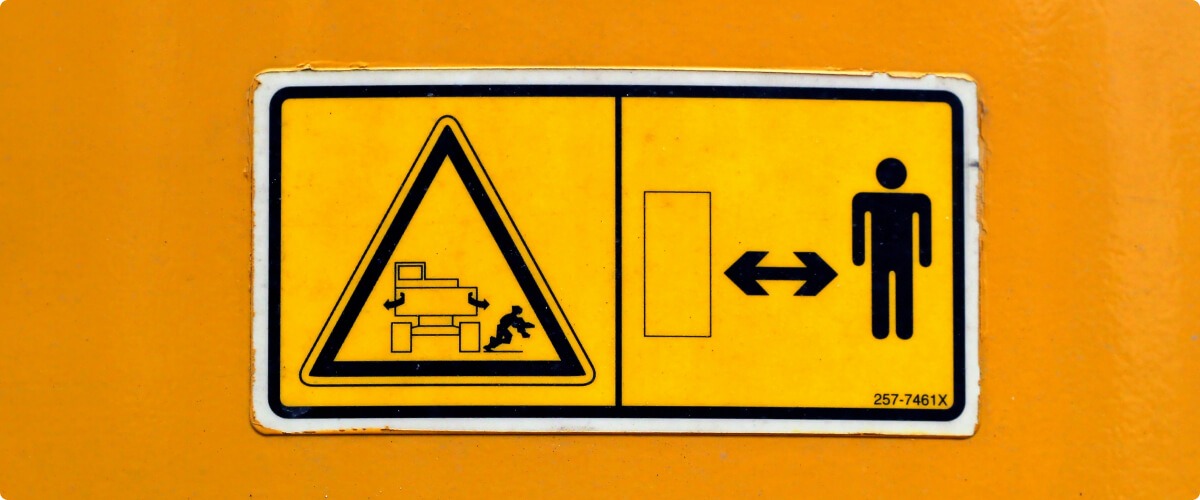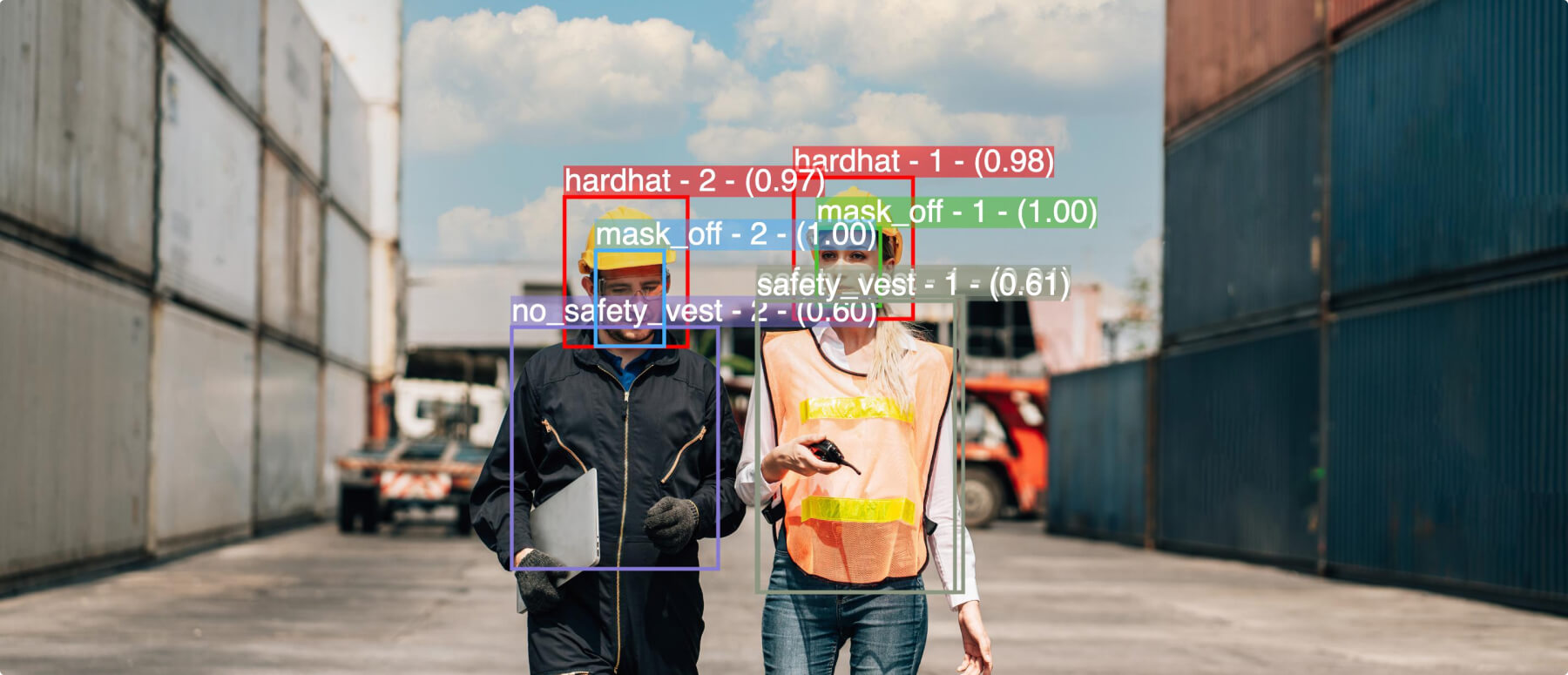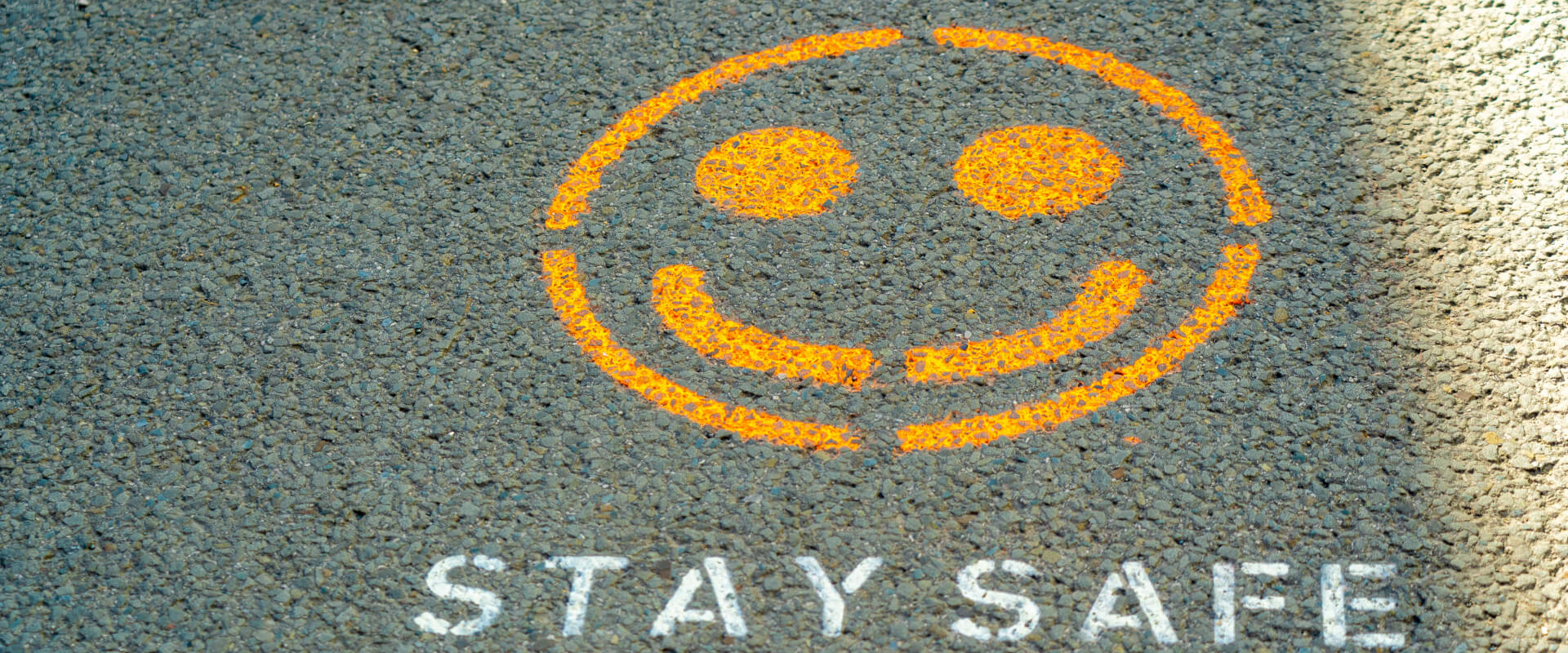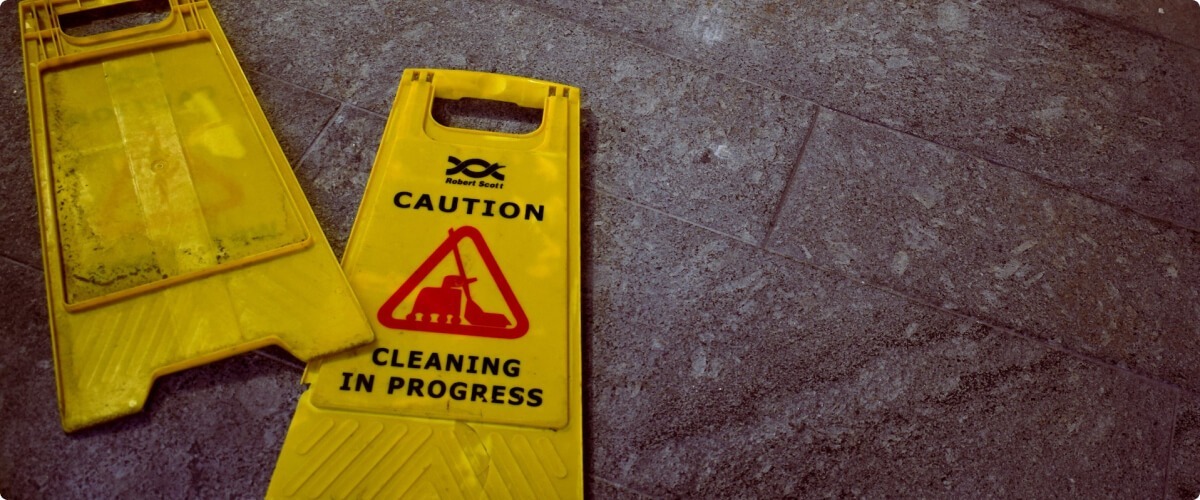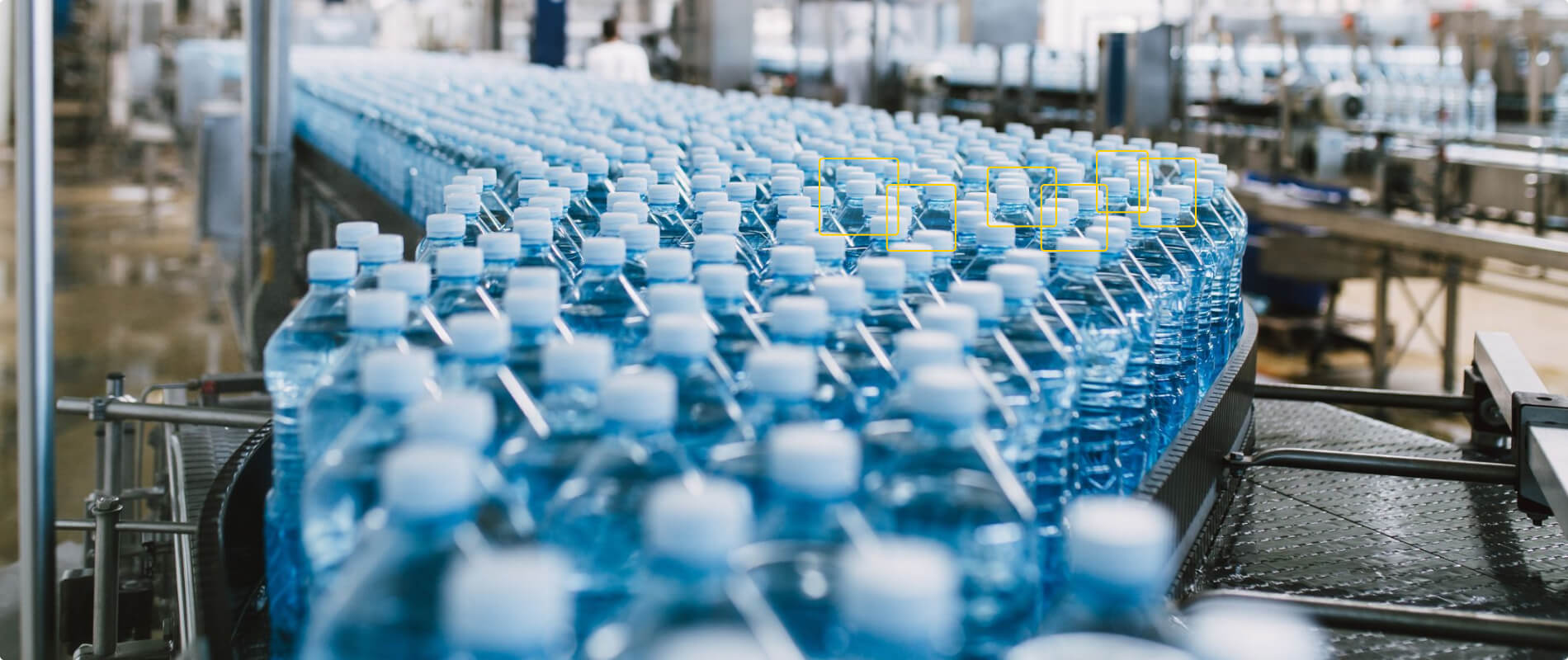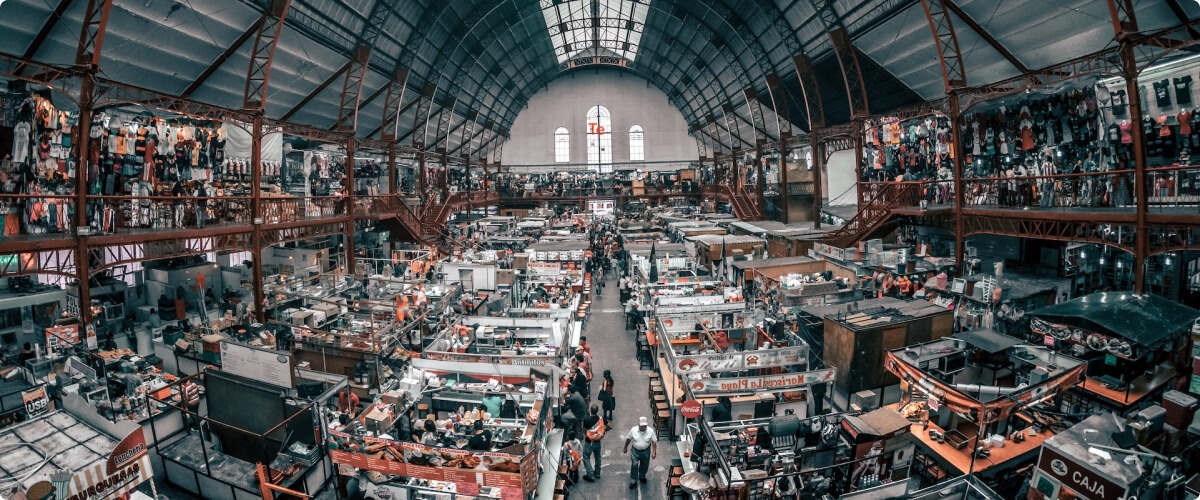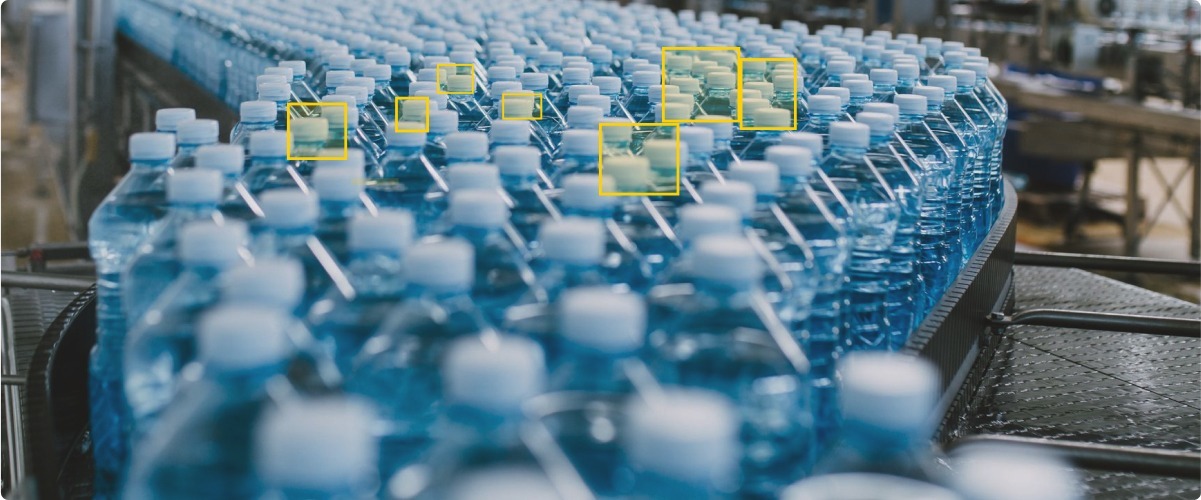In the dynamic landscape of modern manufacturing, ensuring workplace safety remains a paramount challenge. Despite continuous efforts to improve safety measures, traditional approaches often struggle to keep pace with the complex, ever-evolving risks in industrial environments. Enter the game-changers: artificial intelligence and computer vision technology. These cutting-edge tools are not just enhancing safety protocols; they’re completely revolutionizing how we approach workplace safety in manufacturing.
This comprehensive guide delves into the transformative power of AI and computer vision in implementing a proactive approach to manufacturing safety. We’ll explore the pressing challenges faced by the industry, the innovative solutions offered by these technologies, and the compelling return on investment for forward-thinking adopters. Whether you’re a plant manager, an Environmental Health and Safety (EHS) professional, or a manufacturing executive, this guide will equip you with the knowledge to navigate the future of workplace safety.
The High Stakes of Workplace Safety in Manufacturing
Before we dive into solutions, it’s crucial to understand the scope and gravity of safety challenges in manufacturing:
- Financial Impact of Workplace Injuries: According to the National Safety Council (NSC), workplace injuries cost U.S. employers $167 billion annually. This figure includes wage and productivity losses, medical expenses, administrative expenses, and employers’ uninsured costs. The comprehensive costs to society, including quality of life losses, are even higher, totaling over $1.2 trillion annually (Injury Facts) (Injury Facts).
- Human Cost and Regulatory Pressure: OSHA reports that ensuring compliance with safety regulations is crucial, as non-compliance can lead to significant fines and increased scrutiny. Furthermore, the human cost of workplace accidents extends beyond financial implications, causing immense suffering to workers and their families (Injury Facts).
- Competitive Advantage: In an industry where efficiency and reliability are key, a strong safety record can be a significant differentiator in attracting clients and top talent. These technologies help by fostering a safe work environment, boost client trust by demonstrating a strong safety commitment, and reduce downtime and accident-related expenses.
These factors underscore the urgent need for more effective, proactive safety measures in manufacturing settings.
AI and Computer Vision: A New Frontier in Manufacturing Safety
AI and computer vision technologies offer a paradigm shift in how we approach workplace safety. Here’s how these advanced systems are addressing key challenges:
- Real-Time Hazard Detection: Preventing Accidents Before They Happen
Traditional methods struggle to identify hazards like spills, obstacles, or equipment malfunctions in real-time, often leading to delayed interventions. AI-powered computer vision systems continuously analyze video feeds to detect and alert hazards immediately. For example, at a chemical plant, an AI system identifies a potentially dangerous spill and automatically alerts maintenance staff, preventing a slip-and-fall accident. Implementation of real-time safety indicator systems has been shown to reduce workplace accidents by up to 30% in pilot studies. According to a detailed study on AI for safety management, AI-driven systems like computer vision significantly enhance the accuracy and speed of hazard detection, leading to faster and more effective interventions. This proactive approach to safety management reduces the likelihood of accidents and injuries (Redress Compliance). - Ensuring PPE Compliance with Computer Vision
Maintaining consistent PPE usage across large workforces is labor-intensive and error prone. Computer vision systems automatically verify proper PPE usage, alerting supervisors to non-compliance. For example, an AI system at an automotive assembly plant identifies a worker without safety glasses and notifies their supervisor for immediate correction. The Occupational Safety and Health Administration (OSHA) has found that PPE non-compliance is a factor in nearly 30% of workplace injuries, emphasizing the importance of consistent PPE use and monitoring (Injury Facts). - Ergonomics and Repetitive Strain Injury (RSI) Prevention: AI-Driven Posture Analysis
Identifying and mitigating ergonomic risks that lead to RSIs is complex and requires continuous monitoring. AI analyzes workers’ movements and postures to detect ergonomic risks and suggest adjustments. Take a computer vision system in a packaging facility, it can identify workers using improper lifting techniques and provides real-time feedback and training recommendations. RSIs account for $20 billion in direct workers’ compensation costs annually. AI-driven ergonomic interventions can reduce these injuries by up to 40%, highlighting the significant potential for cost savings and injury prevention through AI technology (Injury Facts). - Predictive Maintenance: AI-Powered Equipment Monitoring
Constant vigilance is required to monitor machinery for signs of failure or unsafe operation. AI systems continuously monitor equipment for anomalies, predicting failures and preventing accidents through predictive maintenance. An AI system at a steel mill detects unusual vibrations in a critical piece of equipment, allowing for maintenance before a catastrophic failure occurs. McKinsey & Company reports that predictive maintenance can reduce equipment downtime by 30-50% and increase equipment lifespan by 20-40%. This highlights the substantial ROI that can be achieved by implementing AI-powered predictive maintenance systems (Injury Facts). - Behavioral Safety and Fatigue Detection: AI as a Watchful Eye
Tracking unsafe behaviors and worker fatigue is difficult without continuous supervision. AI analyzes worker movements, behaviors, and visual cues to identify unsafe practices and signs of fatigue. A computer vision system in a warehouse detects signs of fatigue in a forklift operator and alerts management to intervene before an accident occurs. he National Safety Council (NSC) notes that fatigued workers are 70% more likely to be involved in workplace accidents. AI-driven fatigue detection can significantly mitigate this risk, enhancing overall workplace safety (Injury Facts).
- Emergency Response: AI-Guided Evacuation and Rescue
Coordinating rapid and effective responses to emergencies in large facilities is complex. AI systems provide real-time evacuation guidance and identify trapped or injured individuals during emergencies. For example, during a simulated fire drill, an AI system guides workers to the nearest exits while identifying areas where people may be trapped. FEMA estimates that improved emergency planning and response can reduce disaster costs by 30%. According to FEMA, enhanced emergency planning, which includes modern building codes and proactive mitigation strategies, significantly reduces the economic impact of disasters (fema.gov).
Implementation Challenges and Solutions
While the benefits of AI and computer vision in manufacturing safety are clear, implementation can present challenges. Here’s how to address them:
- Initial Costs
The upfront investment for AI and computer vision systems can be substantial. Consider conducting a thorough cost-benefit analysis, factoring in long-term ROI in terms of reduced accidents, increased productivity, and lower insurance premiums. - Employee Privacy Concerns
Workers may be hesitant about constant monitoring. Be transparent about the technology’s purpose and limitations. Emphasize safety benefits over surveillance aspects and involve employees in the implementation process. - Integration with Existing Systems
Ensuring new AI systems work seamlessly with current infrastructure. Be sure to partner with experienced vendors who specialize in manufacturing environments. Conduct thorough testing and phased rollouts to minimize disruptions. - Training and Adaptation
Employees need to understand and embrace the new technology. Invest in comprehensive training programs. Highlight the benefits for worker safety and how technology makes their jobs easier and safer.
The ROI of AI-Powered Safety in Manufacturing
The financial benefits of adopting AI and computer vision for workplace safety are compelling:
- Reduced Accident Costs
Even a 10% reduction in workplace injuries could save U.S. employers $17 billion annually. Fewer accidents mean lower workers’ compensation claims, medical expenses, and indirect business loss expenses. - Increased Productivity
Companies investing in safety improvements see a return of $2 to $6 for every $1 spent. Safer workplaces lead to less downtime and higher employee morale, boosting overall productivity. - Lower Insurance Premiums
Enhanced safety measures can lead to significant reductions in workers’ compensation and insurance costs. Some insurers offer discounts for companies implementing advanced safety technologies. - Improved Regulatory Compliance
Automated monitoring ensures continuous compliance with OSHA and other regulations. Reduced risk of fines and legal costs associated with safety violations. - Enhanced Employee Morale and Retention
The NSC reports that companies with strong safety cultures have 5-8% higher employee satisfaction. Improved safety leads to reduced turnover, lowering recruitment and training costs.
Future Trends in AI-Powered Manufacturing Safety
As AI and computer vision technologies continue to evolve, we can expect even more advanced applications in manufacturing safety such as the following emerging technologies:
- Wearable AI Devices
Smart PPE that can detect environmental hazards and monitor worker vital signs in real-time. These devices could alert workers and supervisors to potential dangers, ensuring prompt action. - Advanced Robotics Integration
AI-powered collaborative robots (cobots) that work alongside humans to enhance safety in high-risk tasks. Cobots can handle hazardous materials, perform repetitive tasks, and assist in complex operations, reducing human exposure to dangerous environments. - Predictive Analytics
Leveraging big data and machine learning to predict and prevent accidents before they occur. By analyzing historical safety data, AI can identify patterns and predict potential hazards, allowing for preventive measures to be implemented. - Virtual and Augmented Reality Training
Immersive, AI-driven safety training programs that adapt to individual learning needs. Virtual and augmented reality can simulate realistic scenarios, providing hands-on experience without the associated risks, and can adjust training based on the user’s progress and comprehension.
These trends represent just a few of the ways AI and computer vision are poised to transform workplace safety, making manufacturing environments safer and more efficient.
Embracing the AI-Powered Future of Workplace Safety in Manufacturing
The integration of AI and computer vision technology in manufacturing safety represents a paradigm shift in how we protect workers and optimize operations. By addressing key challenges such as real-time hazard detection, PPE compliance, and predictive maintenance, these advanced systems offer a proactive approach to workplace safety that traditional methods simply cannot match. The cost of inaction is too high, both in human and financial terms. As the statistics clearly show, embracing AI-powered safety solutions not only saves lives but also delivers substantial ROI through reduced accidents, increased productivity, and improved compliance.
For forward-thinking manufacturing operations and EHS teams, the message is clear: The future of workplace safety is here, and it’s powered by AI. By investing in these transformative technologies, companies can create safer, more efficient work environments while positioning themselves at the forefront of industrial innovation. The journey towards an AI-powered safety culture in manufacturing may seem daunting, but the rewards – in terms of lives saved, injuries prevented, and bottom-line improvements – make it an imperative for any company committed to excellence in the modern manufacturing landscape.
Empower your EHS Teams with Chooch Vision AI
Chooch Vision AI is at the forefront of transforming workplace safety in manufacturing. By leveraging advanced AI and computer vision technology, Chooch provides real-time hazard detection and decision intelligence to address potential risks before they become issues. From PPE compliance and ergonomic monitoring to fire detection and forklift-pedestrian interaction alerts, Chooch delivers always-on EHS monitoring using your existing camera infrastructure. By implementing Chooch Vision AI, you can significantly reduce workplace injuries, maximize operational uptime, and foster a proactive safety culture. Our technology empowers your EHS teams to move beyond reactive measures and embrace a data-driven, preventative approach to workplace safety.
If you are ready to revolutionize your manufacturing safety protocols, discover how Chooch can transform your workplace safety. Contact us today to schedule a demo and experience the benefits firsthand. Learn more about Chooch’s AI-powered workplace safety solutions and take the first step towards a safer, more efficient manufacturing environment.

